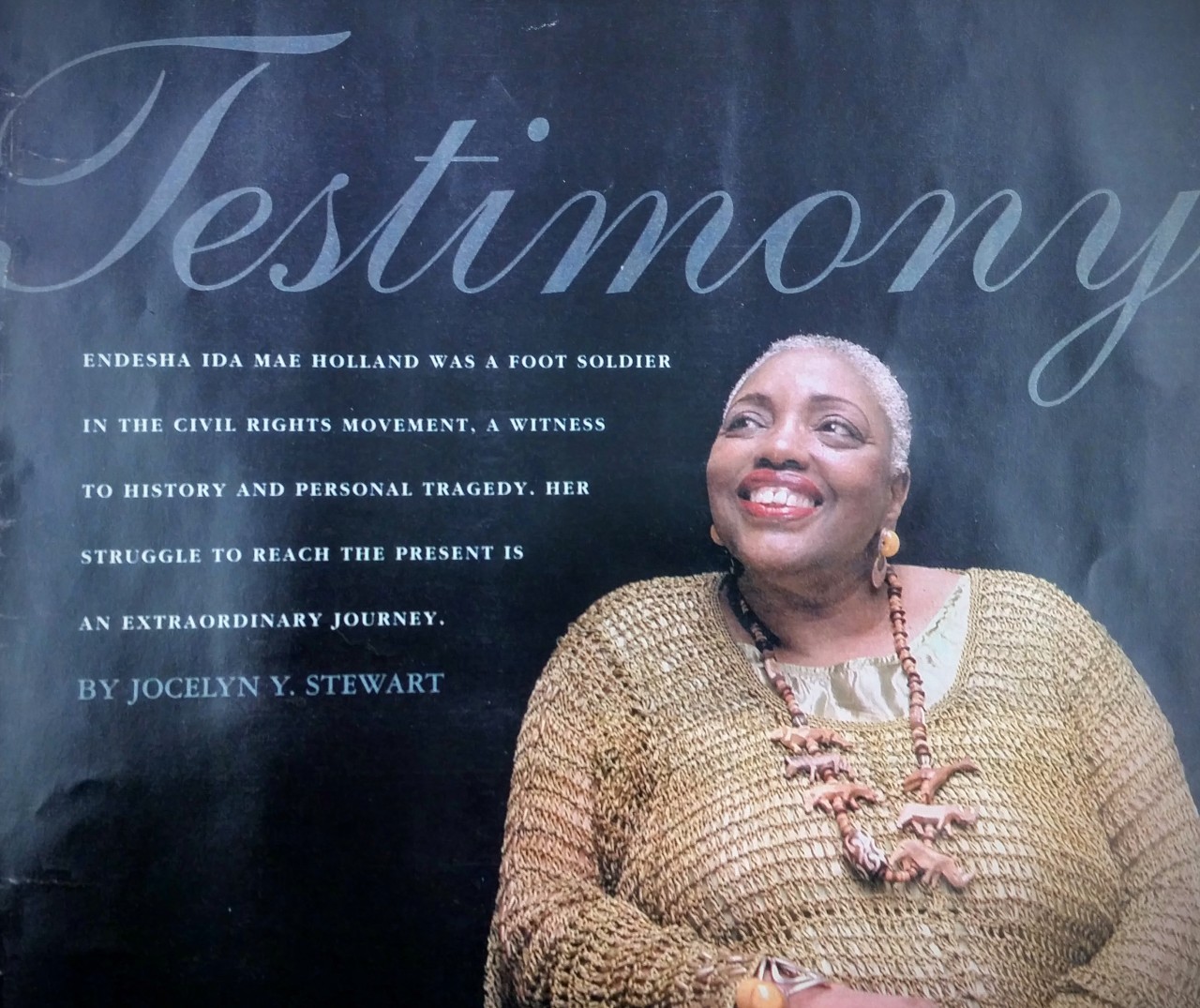Living in a society that was plagued with racism, sexual abuse, and little support, Holland figured that the only way to make ends meet was to turn to sex work and theft. Endesha Ida Mae Holland was 11 when she was raped by a white man who employed her as a baby sitter.
As a teenager, she was arrested several times for shoplifting, street fighting and prostitution until she pursued one customer who would change her life for the better.
Born on August 29, 1944, in the Delta town of Greenwood, Mississippi, Holland was raised along with several siblings in what was described by the New York Times as a “wooden shack, its walls plastered with newspapers”.
Holland never knew her father, “though there were three men who would come by and say they were my daddy,” she later told People magazine. Her mother was a well-known midwife in the community who sometimes took in local prostitutes as boarders to have enough to live on.

Holland, by age 11, was also babysitting when she was raped by the white man who gave her $5 after the incident.
“I knew I was a woman then,” Holland told Ebony magazine in 1992. “And since I didn’t want to go to the cotton fields and work all day, I figured this was a way that I could make money. And I started turning tricks.”
Frustrated after the incident, Holland turned to prostitution, charging white men $10 and African American men $5. She dropped out of school in the ninth grade and then spent time in and out of jail for shoplifting and fighting until the civil rights movement of the 1960s changed her life.
She had then followed a young man she thought could be a customer to his office. But this young man turned out to be a volunteer for the Student Nonviolent Coordinating Committee (SNCC), which had come to Greenwood to register black voters.
In the man’s office, she saw black women working at typewriters and others talking about civil rights and voter registration. This inspired Holland so much that she began volunteering at the SNCC office, marching, speaking and registering black voters.
“I didn’t know what I was doing until I started marching,” Holland said. “My values changed after that. I didn’t want to steal no more, and I didn’t want to ‘ho’ no more,” she was quoted by the Los Angeles Times.

Holland travelled across the nation for the civil rights movement, worked with iconic black leaders like Martin Luther King, Jr., and was jailed 13 times for her activities. This did not, however, deter her from her civil rights work.
“…the workers [civil rights workers] were all inexperienced in going to jail, [and] I was a veteran: I knew how to survive there…. I’d been there so often for stealing and fighting. I felt like a queen in jail. The workers really needed me, and I used to protect them,” she said.
Then the worst happened. In 1965, a fire broke out in her family’s home, killing her mother. Holland believed that the Ku Klux Klan firebombed the house in retaliation for her activism.
In 1966, a year after her mother’s death, Holland left Mississipi for Minneapolis to attend school. She obtained a high school equivalency diploma and started taking classes at the University of Minnesota at the urging of her colleagues in the civil rights movement.
She earned a bachelor’s degree in African-American studies there in 1979, and then a master’s in American Studies in 1984. Two years later, she received her doctorate. She added “Endesha” (meaning one who drives herself and others) to her name just prior to receiving her doctorate.

She later told People Magazine that all the street people she had met throughout her travels attended her graduation in 1985.
“The whores and pimps and junkies were there…. When they called my name, the entire auditorium rose to its feet,” she said.
Holland also became a beloved teacher between 1985 and 1993 when she taught American Studies at the State University of New York (SUNY) at Buffalo. Described then as “a large, authoritative woman with an expressive face and a powerful presence,” Holland created “an electric atmosphere in the classroom”, her colleagues said.
Her courses were so popular that they attracted many students, exceeding the number that was expected.
But what gave her all the glory was her best-known play, “From the Mississippi Delta,” which “chronicled her journey from poverty and prostitution in the Jim Crow South to civil rights activism.” The play, which was widely reviewed, was performed regionally both in the United States and in London before it opened Off-Broadway in late 1991.

Having written about eight plays, Holland, however, became famous for the autobiographical work “From the Mississippi Delta,” which was nominated for a Pulitzer Prize in 1988. She wrote a memoir of the same name, published by Simon & Schuster in 1997.
As a prolific playwright and dramatist, Holland received several awards, including the 1981 Lorraine Hansberry Award for her first play, “Second Doctor Lady.”
After spending more than a decade bringing her life experiences to the stage, Holland passed away on January 25, 2006, at a nursing home in Santa Monica due to complications of ataxia, a degenerative neurological condition. She was 61.
After starting life in the midst of racism, poverty and other tragic circumstances, Holland braved the odds, knowing that she could be a better person. That paid off and she is now an inspiration to many people.










